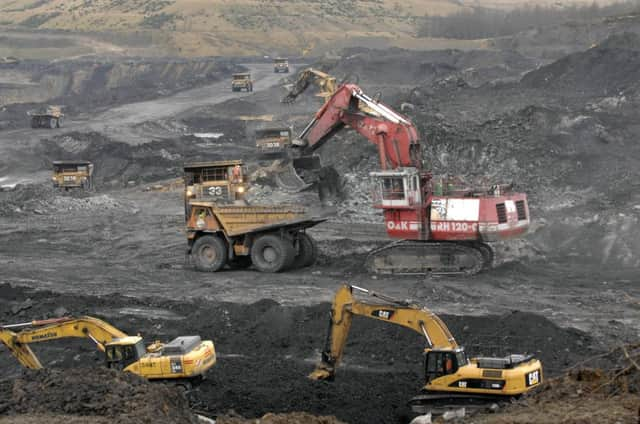Comment: Coal energy | Scottish space industry


While government’s north and south of the Border push the green button (and Westminster has agreed to renew nuclear stations in England), coal continues to have a big say in powering Britain.
A reminder of coal’s continuing presence comes from Hargreaves Surface Mining, which has just hired its 500th worker in Scotland a year after two operators went out of business.
Advertisement
Hide AdAdvertisement
Hide AdThe company manages seven sites in Scotland at St Ninians and Muir Dean in Fife, Broken Cross in South Lanarkshire, Duncanziemere, Netherton and House of Water in East Ayrshire, and Glenmuckloch in Dumfries and Galloway.
The industry’s heyday is long past, never to return, but a glance at its contribution to the economy tells us that we cannot underestimate it. Even after the almost total wipeout of the pits, coal still provides 40 per cent of the country’s energy supply and 50 per cent at peak times. It is worth £450 million to the economy and it will take some years for this capacity to be replaced by renewables which, by the way, enjoy taxpayer subsidies.
Coal may not be top of any young person’s list of career options these days, but Hargreaves is heading in the right direction in creating jobs as it promised this time last year when talks took place amid considerable uncertainty in local communities following the collapse of Scottish Coal and ATH Resources.
An important part of the company’s work these days is in restoring sites and it removes enough material each week to fill more than 125 Olympic-sized swimming pools. To that extent, the industry is doing its bit to clean up the environment.
Of significance for the wider economy is that only 17 million tonnes of the 62 million tonnes of coal that was burnt in the UK in 2012 was mined in this country. The remainder is imported. This is either a missed opportunity for British-mined coal or a reflection of its inability to meet demand because it no longer has the required capacity.
It does, indicate, however, how much Britain still depends on the black stuff and how it cannot be discounted in the development of an energy policy.
Space: the final frontier for Scottish industry
BY WAY of contrast to the industries of old, Scotland finds itself in the midst of a new space race. A nascent industry is being built around satellites and space flight that could put Scottish ingenuity at the forefront of another industrial revolution. This is exciting stuff that truly embraces the future.
Already the first Scottish-built satellite has been launched and plans are afoot for space flights from Campbeltown as the UK government revealed that six Scottish locations are among eight being considered to become Britain’s first spaceport. The others are Kinloss, Leuchars, Lossiemouth, Prestwick and Stornoway, with 2018 pencilled in for the opening.
Advertisement
Hide AdAdvertisement
Hide AdThree of these are RAF bases – obvious places to start when looking for a location – while Prestwick is an interesting option as it could put the struggling airport to good use.
Remarkably, the space industry already contributes £11.3 billion to the economy each year, supporting nearly 35,000 jobs. Make no mistake, this is a prize worth having.